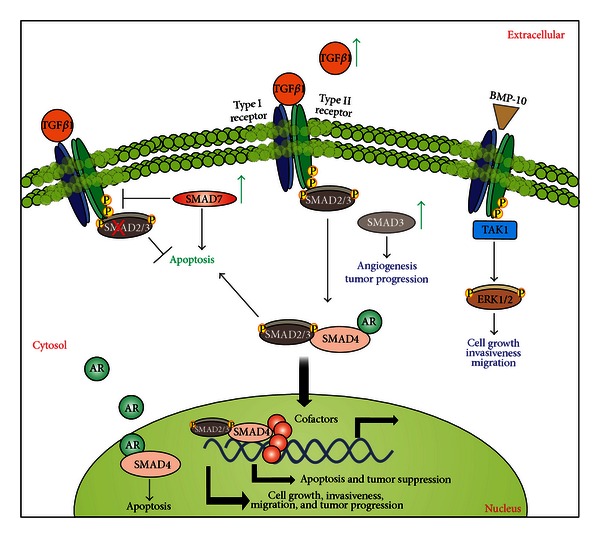Figure 6.

The TGF-β/SMAD signaling pathway and its implication in prostate cancer. When a TGF-β ligand binds to the constitutively active type II receptor, this complex associates with the type I receptor, forming a tetrameric receptor. The type II receptor phosphorylates and activates the type I receptor, which allows the recruitment of R-SMADs. The activated type I receptor then phosphorylates the MH2 domain of R-SMAD, activating it. Activated R-SMADs form complexes with SMAD4, which is then translocated to the nucleus. In the nucleus, SMAD complexes interact with nuclear proteins to activate or repress the transcription of target genes. Furthermore, BMP-10 can signal through SMAD-independent pathways and inhibit cell growth, invasiveness, and migration. TGF-β can also promote androgen receptor (AR) translocation into the nucleus and AR-dependent gene transcription. AR can combine with SMAD4 and regulate TGF-β-mediated apoptosis. According to the TGF-β central dogma, in normal epithelium or early-stage cancer cells, TGF-β acts as a tumor suppressor, by inhibiting cell growth, invasiveness, and motility and promoting apoptosis. In more advanced cancer cells, TGF-β has tumor-promoting functions; it promotes proliferation, invasion, and motility of cells and inhibits apoptosis. Green arrows indicate potentially up-regulated proteins in PCa.
